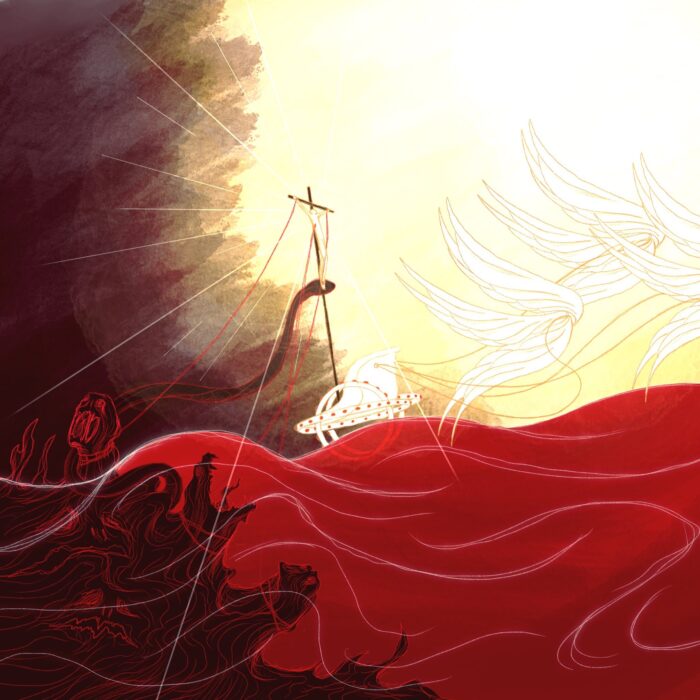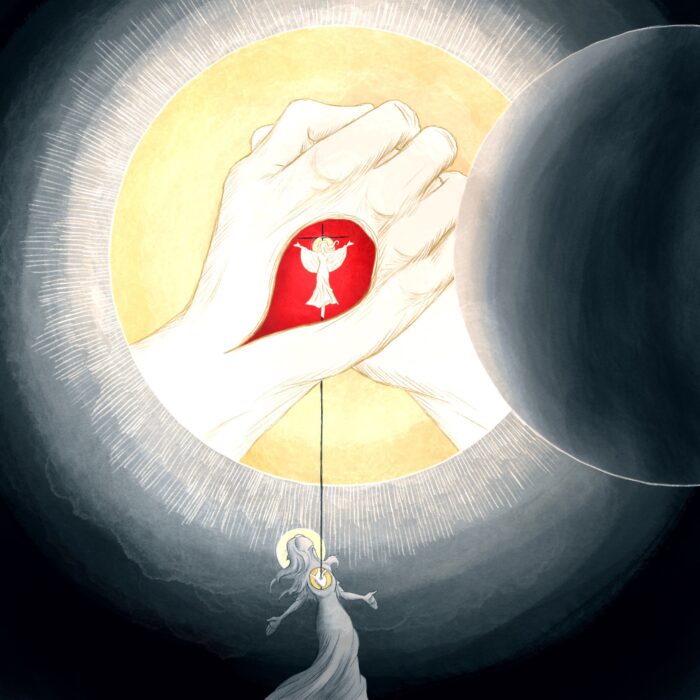Col 3:5-6 [8], ‘Put to death, therefore, what is earthly in you: sexual immorality, impurity, passion, evil desire, and covetousness, which is idolatry. […anger, wrath, malice, slander, and obscene talk…] On account of these the wrath of God is coming.
The ‘therefore’ at the beginning of this passage refers back to 3:3, ‘you have died, and your life has been hidden with Christ in God,’ which, in turn, depends upon verse 1, ‘you have been raised with Christ.’ Paul’s logic is clear: The Christian has been united to the crucified and risen Jesus; they truly died in His death, and they have truly been raised through His resurrection, and IF this is so, THEN they ought to (and will) put to death that which has already been decisively put to death on Calvary, namely, their Christ-opposing passions and actions.
This image is a prayer for and call to that putting-to-death of the anti-Christ self. In the picture, the monstrous sin-self is bounded by the circle of the stone of Christ’s tomb, representing the sphere of death in which we are born in Adam, the sphere that is illumined by the fire of the wrath of God (v.6). This sphere has been and is being rolled away to reveal the open mouth of the tomb. By His descent into and resurrection from the sphere of death, Jesus has swallowed up death and it is—like the stone—being rolled away.
In this ‘time-between’ time, the saint exists as both the slain sin-self, and the risen Christ-bound self. This image is not a before and after, it is a picture of our present experience as those already crucified and already raised, and yet still putting to death our sin and seeking after the things above. And how is this ‘putting to death’ achieved? See that the Spirit wields the resurrection-Illumined cross (the gospel word of the anastasiform** Son) and that it is by this that sin-self is slain. There is no victory over sin apart from the Spirit-wielded word of the cross.
Finally, see that even as the sin-self roars in its gospel death, the saint—in his union to the risen Christ—looks upon the face of the Lord who loves him and gave Himself for him. The war is fought not to enter, but from the assurance of—grace.
**A few people have asked me what ‘anastasiform’ means. ‘Anastasis’ is the Greek word for ‘resurrection’, so ‘anastasiform’ means ‘resurrection shaped.’ I use this instead of ‘cruciform’ (cross shaped), NOT because the resurrection eclipses the cross, or because the resurrection is ‘happy’ and the cross is ‘sad’, but because the cross is not true until it is illumined by the resurrection. And this illumination does not remove the horror and agony and depth of the cross, rather it transfigures these very horrors into glories, revealing them to be—as they are embraced in the human experience of the divine Son—the heralds of God’s love, the banner-bearers of His Name, the witnesses of His Beauty. We cannot see the glory of God in the crucified Jesus until He is declared to us in and as the flesh of the risen Jesus. So, speaking of Christ (or the Bride, or reality) as ‘anastasiform’ is a way, not of obscuring the cross by the light of the resurrection, but of illuminating the cross so that it can be seen for what it is: the throne of YHWH’s glory, the altar of His love, and the declaration of His Name; and so, the genesis and telos and center of all things.




